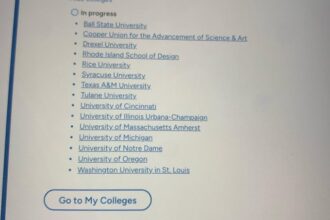For whatever reason, 1962 was a banner year for doughnuts in Cincinnati. That was the year two national chains, Mister Donut and Dunkin’ Donuts, unveiled plans to open outlets in the Queen City. Also in 1962, one of our local doughnut shops, Daily Donuts, announced it would open three new locations, creating a homegrown chain stretching from Price Hill to Forestville.
It’s not as if Cincinnati was unfamiliar with the toroidal pastry. In 1960, Daily Donuts debuted in Finneytown, almost simultaneously with Holtman’s opening their first location in Newtown. The very first local shop dedicated entirely to coffee and doughnuts was probably Chatten’s on Fountain Square, in operation since 1920. But it took a long time for the doughnut habit to reach critical mass in our town and the meandering path led through New England, Germany and France.

When doughnuts were first served in Cincinnati, they were quite frequently associated with Thanksgiving and with Down-East Yankees. In 1846, for example, the New England Society of Cincinnati celebrated the landing of the Pilgrims at Plymouth Rock with a December 22 dinner. The highlight of that festivity was a two-and-a-half-hour oration by attorney Benjamin B. Fessenden, followed by a substantial feast at Melodeon Hall. According to the Enquirer [24 December 1846]:
“The table literally groaned with pork and beans, turkies, chicken pies, pumpkin pies and doughnuts. In the centre of the table was a pyramid formed of doughnuts, which was something less in size than the Plymouth Rock.”
A few years later, a menu for another Thanksgiving feast included turkey, chicken, puddings, pumpkin pie and doughnuts. An 1851 report by a Cincinnati journalist of a tour through New England made sure to mention doughnuts. And you will note that the two national chains set to invade Cincinnati in 1962 were both from Massachusetts – Mister Donut from Boston and Dunkin’ Donuts from Quincy.
Although strongly connected to autumn in the urban areas, for a long time doughnuts were considered a rural delicacy. When a delegation of Cincinnati Republicans called on President-elect James Garfield, they were welcomed, according to the Enquirer [4 December 1880] by Lucretia Garfield, soon to become First Lady:
“They were introduced to Mrs. Garfield, who, in regular old-fashioned country style, passed around the doughnuts and coffee.”
As late as 1915, the Cincinnati Commercial Tribune, in describing activities at a vacation resort, noted that coffee and doughnuts were served “just as such things are found in a country station.”
A major shift in Cincinnati’s appreciation of doughnuts emerged from World War I. As our doughboys deployed throughout France in the “War To End All Wars,” they were greeted by the ladies of the Salvation Army, who had established refreshment stations on routes into the combat zones, offering coffee and doughnuts. Whether it was the threat of bombardment, a special recipe, or the comfort of a feminine smile, our soldiers acclaimed those pastries the pinnacle of gustatory delight. That created, according to the Enquirer [5 September 1919], a predicament back home:
“After coming home from overseas service a Cincinnati boy, who was in the Rainbow Division, urged his mother to make him some doughnuts. When he came home he was met by mother with great platters of sugary doughnuts. He took a few bites and then said: ‘Well, mother, these are mighty good, but they are not up to the Salvation Army doughnuts.’”
Capitalizing on that reputation, the Cincinnati contingent of the Salvation Army employed doughnuts as a fund-raising tool. In an effort to secure $40,000 to fund an affordable housing project, volunteers sold freshly cooked, authentic Salvation Army doughnuts for a dollar apiece from vats of bubbling lard on Fountain Square. Donors gobbled thousands a day.

Sensing a potential goldmine, manufacturers of doughnut-making machines began advertising in Cincinnati newspapers. A 1920 pitch for Chicago’s Jarvis Corporation sounded ecstatically optimistic:
“Rent a store and start a doughnut shop. One person with an Automatic Jarvis Machine can make enough flaky, golden brown doughnuts to keep four people busy selling them!”
Originally dedicated to selling orange drinks, the Chatten Fruit Products store on Fountain Square pivoted in 1920 to coffee and doughnuts and began marketing its own doughnut machine. Chatten’s “Famous Coffee and Doughnut Shop” must have moved a lot of pastries; rent on their storefront was $10,000 a year in 1919 dollars.
A block north, at 28 East Sixth Street, William P. McCrone’s cafeteria was turning out 500 doughnuts every hour by 1928. Celebrating the tenth anniversary of his eatery, McCrone bragged about his automated contraption:
“Crowds of interested people daily watch it cooking the delicious doughnuts Mr. McCrone sells to his rapidly increasing trade. Coffee is served with the doughnuts, which are delivered fresh and hot each minute from the wonderful machine.”
So popular had doughnuts become by mid-decade that the Enquirer’s “Mothers Ask” column [6 November 1925] had to assure housewives that doughnuts were no less digestible than any other sort of baked treat and had only slightly more fat than poundcake.




